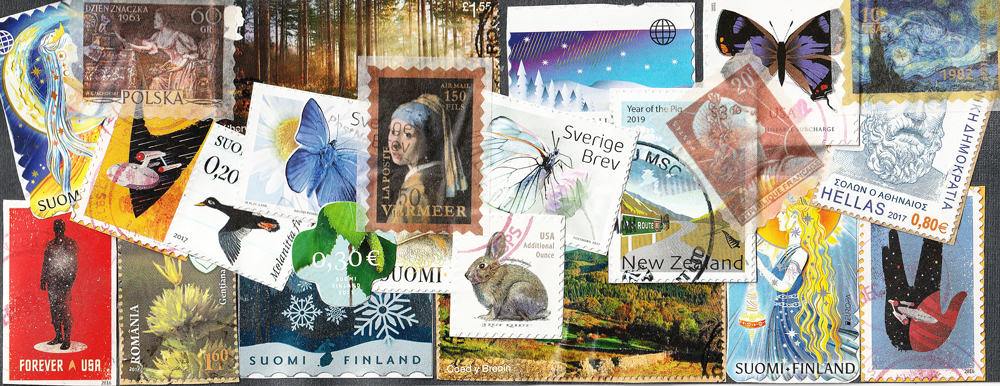 The International Body Music Festival returns for its second year to the San Francisco Bay Area, December 1-6, 2009. This year the Festival director, Keith Terry, has tracked down human beatboxers, a flamenco duo, Peruvian zapateo , and a sound Terry has heard for years and will spotlight.
The International Body Music Festival returns for its second year to the San Francisco Bay Area, December 1-6, 2009. This year the Festival director, Keith Terry, has tracked down human beatboxers, a flamenco duo, Peruvian zapateo , and a sound Terry has heard for years and will spotlight.
“There’s a distinctive clapping style from North Africa to the Persian Gulf,” Terry says. “You get a high popping sound when you spread your fingers and keep your hands parallel. And they clap intricate interlocking rhythms.” The Festival brings together a group of performers of this style, using contacts within the Arab music community to scour for performers of this form. The ensemble will perform back to back with Silvia Moreno Gil and Fátima Moreno González, two well-known Spanish flamenco dancers who dance, sing, and perform the distinctive flamenco clapping style known as palmas. By putting the two groups side-by-side, the Festival invites listeners to ponder the Moorish connection between Arabic clapping and flamenco’s palmas.
Interestingly, the juxtapositions at the Festival are balanced by the sonic cross-cuts of this little-known music form called Body Music. This was demonstrated in the debut Festival last year. “We were all playing our bodies,” Terry says, “but culture would really shine through with every artist. That really hit me – we were all playing the same instrument, but the result that came out was so distinctively French, or Turkish, or Brazilian.”
At another point along the body music spectrum is one of hip hop’s most creative human beatbox vocal percussionists. Kenny Muhammad, a.k.a. The Human Orchestra, is known for emphasizing complex polyrhythms, non-percussive sounds, and a breathing “wind technique.”
Cuba’s Vocal Sampling was scheduled to perform, but the six-man ensemble from Havana was not able to secure a visa on time. First-time listeners of Vocal Sampling often cannot tell that the many parts of the Latin Orchestra—from multiple percussion lines, an entire horn section, piano, strings, bass, and more—are entirely reproduced with the human voice. Their performance will emphasize classic boleros, rumbas, son and other Cuban traditional and folkloric styles.
The Latin theme continues with the Bay Area Peruvian group De Rompe y Raja, who will showcase the art of zapateo criollo, a percussive dance form that mixes African rhythms with Creole, Spanish Gypsy, European, and indigenous Peruvian rhythms. The nine-piece group with Peruvian zapateo master Braulio Barrera, will perform an a cappella arrangement where the guitar and cajon accompaniment are expressed through vocal percussion .
Other performers at the 2009 Festival include LeeLa Petronio, a tap dancer from France who will be combining non-tap footwork with body percussion; Max Pollak, another soloist, performs what he calls RumbaTap, a form that combines foot-driven percussion with the organic flow of Afro-Cuban rumba; Rashidi Omari, a young Bay Area dancer who specializes in hip-hop contemporary dance, an expression derived from local Oakland culture marked by high energy and a frenetic pace; Festival director Keith Terry’s own solo contemporary body music as well as his duo work with Evie Ladin; the Prescott Clowns , an Oakland youth performance group led by hambone artist Derique McGee; and a student performance group from the San Francisco School, led by Sofia Ibor Lopez.
The Festival—which erodes the global/local divide—also creates opportunities for local body musicians to rub shoulders with international performers, not only in formal programming, but also at the Open Mic Night and their Closing Party, which is open to the public. Both events are expected to launch spontaneous collaborations.
While the International Body Music Festival raises awareness of this music/dance meta-form and gives it a name, it also creates a place for both local and international performers who can be performative misfits. “This is going to be really interesting not only for the audiences, but the artists too,” he says. “What happens when you put beatboxers in this context? I was telling Kenny Muhammad about Indonesian kecak and Inuit throatsinging, both of which we had last year. These are musicians who may not know about each other or even their genres, but who are making related music. When I play a tap dance festival, I am usually the odd one out. A lot of the artists coming to the Festival don’t quite fit into a box either. When they come here suddenly they are in a box with others who work outside the box.”
“We’ve polluted the gene pool by doing this festival,” jokes Terry. “In the past, we were operating in isolation. The Festival is a conduit, creating a gathering place for these musician/dancers to hang out, interact, learn from each other and play. These connections are continuing outside the Festival context, as well as in our local communities.”
More information at http://www.crosspulse.com
Author: World Music Central News Room
World music news from the editors at World Music Central

